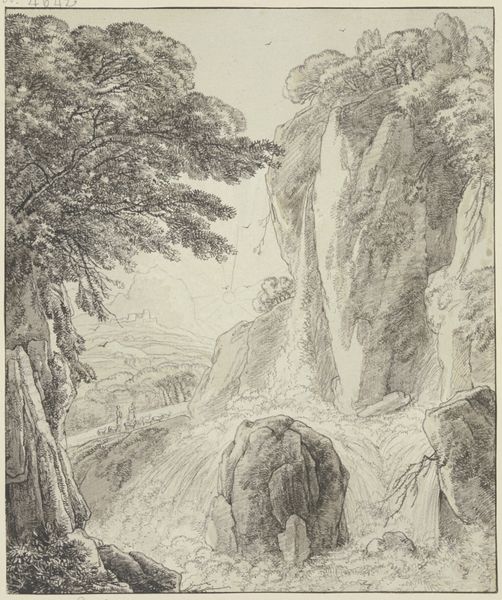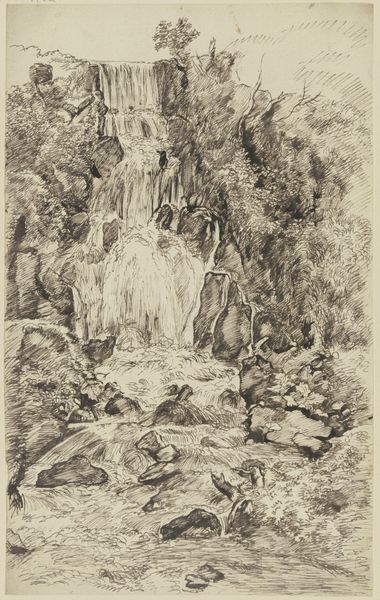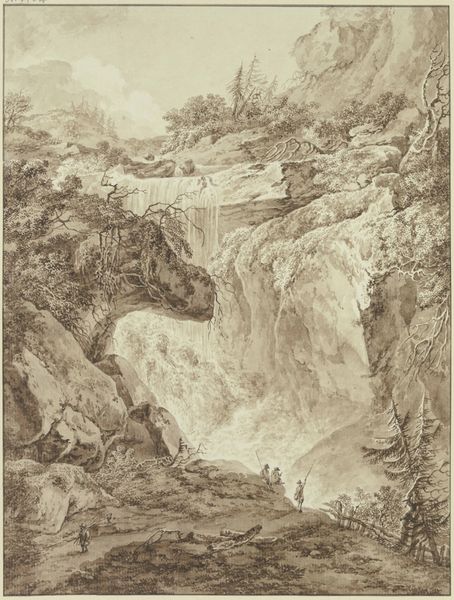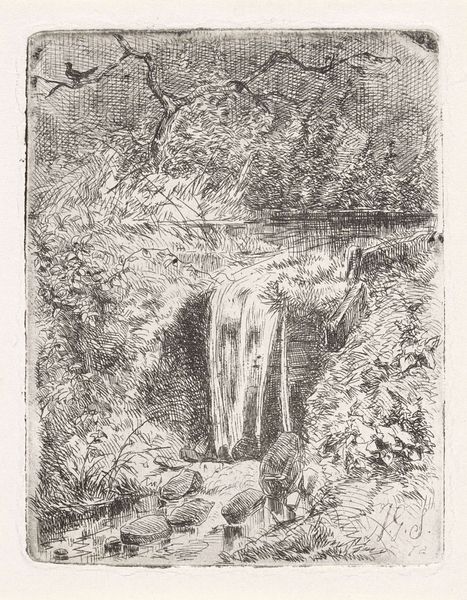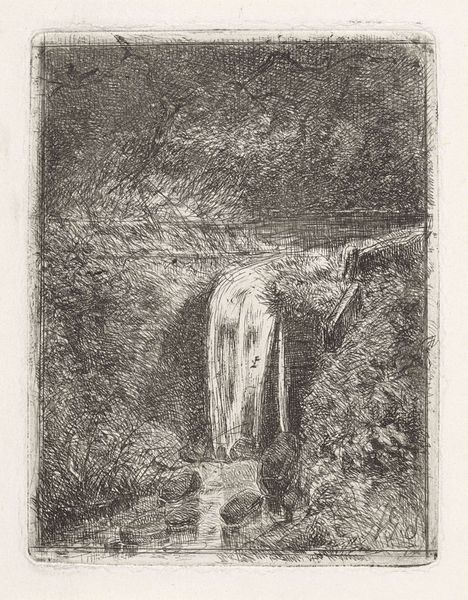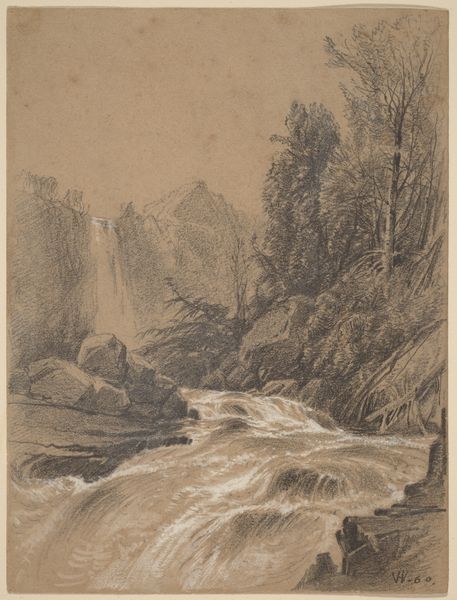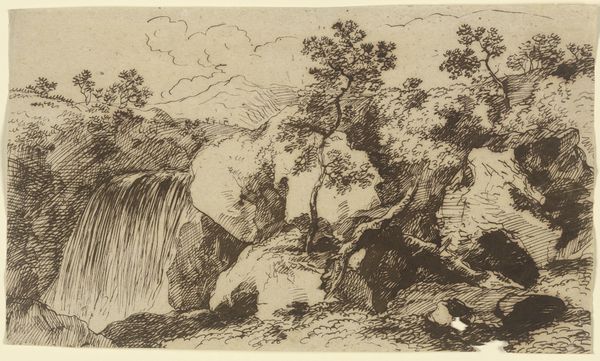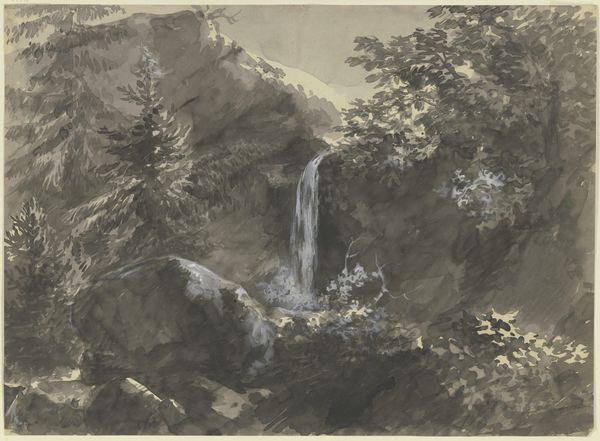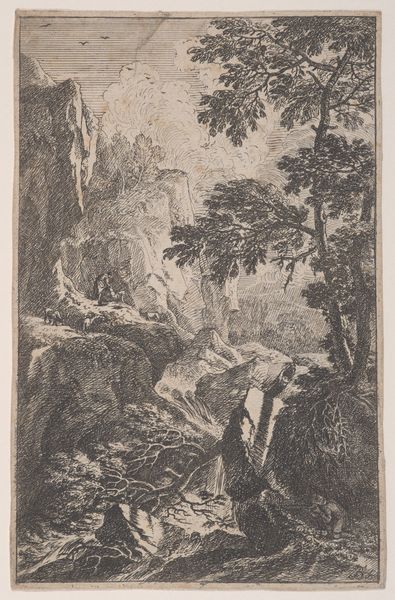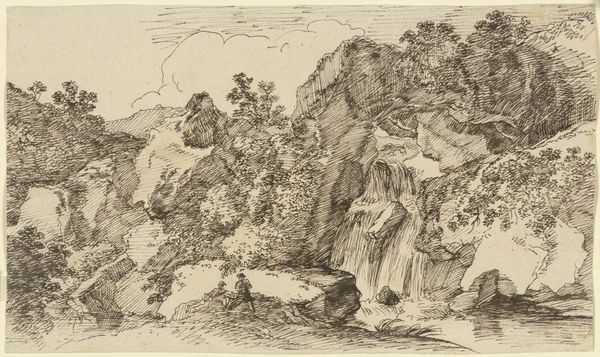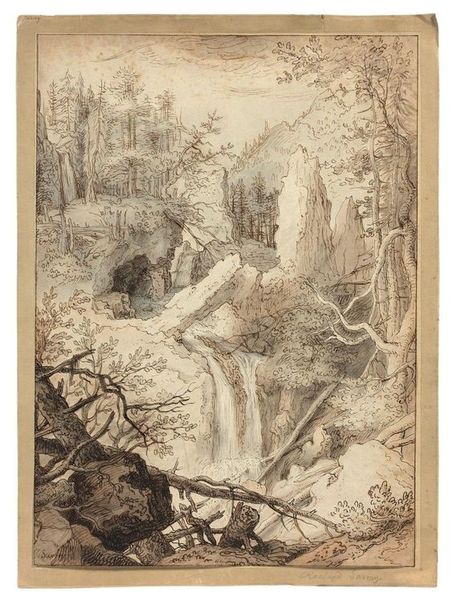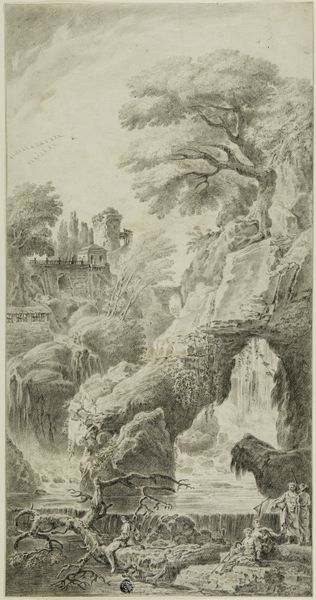
drawing, pencil, graphite
#
pencil drawn
#
drawing
#
landscape
#
romanticism
#
pencil
#
graphite
Dimensions: height 360 mm, width 258 mm
Copyright: Rijks Museum: Open Domain
Editor: This is Adrianus Johannes Bik's "Waterval, West-Java," a pencil and graphite drawing dating back to the early to mid-19th century. It has a somewhat dreamy, romantic quality with all of the foliage. What do you see in this piece? Curator: I see more than just a pretty picture of a waterfall. This drawing is steeped in colonialism and the gaze of the Dutch empire. Bik, like many artists of the time, was capturing an image of the 'exotic' East for a European audience. How do we unpack that romantic aesthetic while acknowledging the power dynamics at play? Editor: So, the "romantic" elements are tied to the exoticism that the West placed on other cultures? Curator: Exactly. The meticulous detail in the rendering of the landscape almost feels like a claim, a way of possessing the land through representation. The very act of sketching was implicated in colonial projects of mapping, surveying, and ultimately, controlling territory and resources. What does it mean to depict a 'wild' landscape? Is it truly wild if you're claiming it? Editor: I hadn't considered the act of drawing itself as an assertion of power. Curator: And the choice of subject! Waterfalls are often seen as symbols of nature's untamed beauty. But within a colonial context, this imagery also reinforced a narrative of the East as both alluring and needing to be "civilized." The absence of any Indigenous presence within the drawing speaks volumes, as though this landscape existed vacant of human life until it was claimed. Editor: Wow, I definitely have a different view of it now. It is a very intricate drawing but that is just the surface, like so many things. Thank you. Curator: It is always rewarding to think critically about the world represented by the art in its social-historical context, so that the viewer's interpretation becomes transformative and aware of inequalities that permeate through history.
Comments
No comments
Be the first to comment and join the conversation on the ultimate creative platform.
